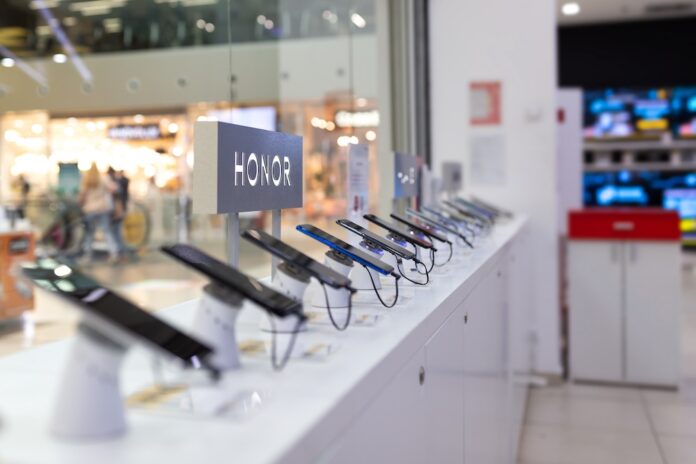This is good and bad news for operators who must invest ever more in mobile network capacity if more capable handsets consume even more data
The latest research from Canalys, now part of Omdia, shows smartphone shipments into Europe (excluding Russia) grew by 5% in 2024, marking the first growth year following four consecutive years of declines. While cloud services and data centre growth projections fly to the stratosphere, actual mobile sector news is harder to come by so this is good news. However, it can be seen as a double-edged sword given spectrum is finite – networks investments will be inevitable.
Outside Europe, it’s happening. Telstra this week announced an AUD 800m four-year investment in Ericsson kit to expand its 5G network. Of course, Europe has the issues around scale and competition which are the elephants in the room when measuring mobile progress but on the handset front at least, resilient high-end demand combined with a replacement cycle of mid-to-low-end smartphones bought during the pandemic contributed to injecting growth back into the market.
Canalys said Samsung reaffirmed its position as Europe’s largest smartphone vendor, growing its 2024 shipments by 6% to 46.4 million units. Apple was the largest vendor in Q4 2024 backed by a positive reception of the iPhone 16 series combined with continued demand for iPhone 13 and 14. Shipments of iPhones into Europe grew by 1% compared to 2023, reaching 24.9 million units. Apple launched its SE replacement the 16e, built using its own modem instead of Qualcomm’s, and while low-end models don’t really dent it overall revenues, it does give the vendor the chance to pull more people into its ecosystems and deliver service revenue growth.
Xiaomi finished third on the ranking table shipping 22.2 million Redmi, POCO and Xiaomi branded smartphones, the same volume as in 2023. Motorola delivered its best year in Europe yet, as it grew 26%, surpassing 8.0 million units. OPPO, including OnePlus, rounded out the top five, growing 13% to 4.1 million devices.
In a different Galaxy
“Never before have more high-end smartphones been sold than in 2024, with more than 41 million smartphones having a list price of US$800 or higher, mainly driven by Apple and Samsung,” said Canalys Analyst, Runar Bjørhovde. “For Apple, the iPhone 16 series has had a positive reception alongside a push of iPhone 13 and 14 into the channel ahead of their discontinuation on 28 December due to the EU’s USB-C directive. The newly launched iPhone 16e is critical for Apple’s position in Europe, helping it maintain a presence in the mid-range and expand Apple Intelligence capable devices ahead of its expansion into the EU later in the year.”
“For Samsung, the Galaxy S24-series helped deliver its highest high-end volume since 2019,” he said. Its high-end growth was backed by effective marketing campaigns leveraging Galaxy AI and the Olympics, alongside comprehensive promotions.”
Bjørhovde added that mass market devices made a comeback in 2024, helped by increasing competition contributing to pulling demand forwards. “Although Samsung and Xiaomi remain the dominant leaders in this segment through region-wide footprints, they are being increasingly challenged by vendors coming from behind and strategically targeting a few core markets,” he said.
“Motorola reached an all-time high in Europe in 2024, which is a result of region-wide expansion particularly targeting open market channels. Expanding its physical footprint as well as growing through telcos will be a key step for it to continue to grow. OPPO’s volume returned to growth following two difficult years, driven by a key focus on Spain, Italy, Romania and Portugal,” he said. “Additionally, HONOR and realme grew by double digits compared to 2023, intensifying competition and creating excitement within the channel and among consumers for what’s to come.”
Rules makers
Bjørhovde reckons this year will be a flash point – possibly one of the few not driven by the US administration. Handset manufacturers are going to have to act to comply with the EU’s eco-design directive. “Many portfolios must be upgraded and refreshed to meet the requirements ahead of 20 June, including providing five years of software support and security patches,” he said. “The directives will particularly disrupt the competitive dynamic between mass-market-focused vendors, as margins are already tight and potential price increases can rapidly impact demand.”
He said Samsung’s decision not to bring the Galaxy A06 into the region alongside six years of software and security support of the Galaxy A16 is the clearest existing example of a vendor’s preparation. “Vendors will prioritise operational profitability amid the industry’s shift, backing up wider business performance with growing sales across the wider device ecosystem, targeting revenue growth from services, B2B plans, and channel expansion,” he said.
“Although the eco-design requirements have presented huge challenges for vendors to comply with, for some vendors, even greater challenges are to come in 2027 as the EU will require batteries to meet certain standards such as replaceability,” he said. An iPhone with a replaceable batter – wonders will never cease.



